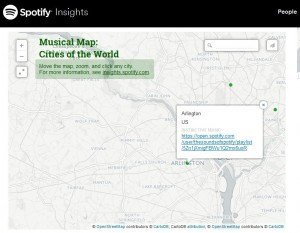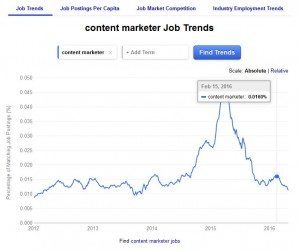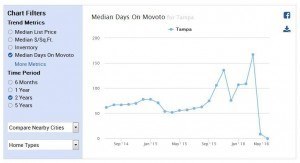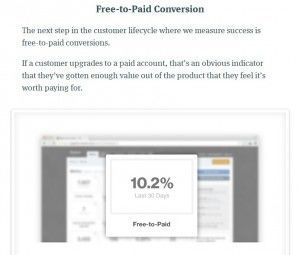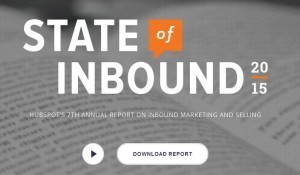If you’re struggling to come up with ideas for branded content, it’s possible that you aren’t looking for inspiration in the right place. You could be sitting on a content gold mine and don’t even know it.
Most brands already have troves of information that exist nowhere else. This information is the foundation of interesting stories that will appeal to both publishers and audiences.
So where is this content gold mine hidden? Right under your nose. Your company’s internal data can be the starting point for amazing material.
What Is Internal Data?
Internal data is information, statistics, and trends that organizations discover through their operations. It includes facts and figures that companies pull from internal databases, software, customers, and reports.
Internal data may include the following:
- sales trends
- customer habits
- software user trends
- operational trends
- marketing intelligence
- internal research
- results from surveys
Unlike external data, which is available to the public, internal data is exclusive to a brand. It’s information that is not available anywhere else. This is just one of the reasons why this data is so perfect for brand storytelling.
The Benefits of Using Internal Data in Content Marketing
Exclusive, original data is perfect for content marketing because both publishers and readers love it. Internal data can be turned into a variety of brand stories that publishers want to promote on their websites and audiences want to read and share. Content based on original data attracts attention and comes with several other benefits.
Originality
Rather than regurgitating what the rest of your industry is saying in their content, sharing your company data allows you to present something unique. By opening the kimono and sharing your internal data, you’re offering something that can’t be found anywhere else; this is extremely attractive to publishers looking for original content that shares new information.
Consumer Value
Audiences enjoy educational content that shows them something they haven’t see before. By using internal data, you can create valuable content that educates, introduces new ideas, and/or provides support for existing ideas.
Brand Authority
Releasing valuable data helps position your brand as an authority. You can be seen as a go-to source for data about your industry, which can lead to journalists and industry analysts regularly citing your data-centric content.
Operational Transparency
More and more customers crave transparency from the brands they love. Opening up your organization and sharing insider information is a way to give customers an inside look into your brand.
Consumer Trust
Customers crave transparency because it helps them trust brands. When you share internal data and an inside look at your business or operations, it shows that your company values openness. This lets your customers know you have nothing to hide, which builds trust and lasting consumer-brand relationships.
Brand Recognition
In a content-filled world, getting brand exposure is difficult. It’s hard to stand out. But original, internal data allows you to cut through the noise and get your brand in front of a larger audience. Audiences are introduced to your brand and left with an impression that will allow them to recognize and remember your brand.
Company Worth
Internal data is also useful for promoting your brand and showing its value. You can use your internal data to show how your products or services benefit your customers. The data can show how you differ and stand out from competitors, putting your brand in a position to resonate with potential customers.
Sharing internal data helps brands connect with publishers, readers, and even potential customers, but how do you find this data and use it to your advantage?
Examples of Brands Using Company Data for Content Marketing
Let’s look at a few brands that are using internal data to create captivating brand stories and content marketing campaigns.
Spotify Provides Originality
Spotify, a streaming music service app, collects data all day every day. As listeners select songs, playlists, and artists, the music app collects information on the user’s musical choices as well as their location and demographics.
Spotify has unique access to listeners’ habits and traits; this allows it to create original, unique content that isn’t available anywhere else. The company shares the information and trends it uncovers in its data on the Spotify Insights blog. A few examples of how it has used the data include:
- Most Patriotic States According to Spotify Listening
- Data Viz: How the Super Bowl States Listen
- The Beatles’s First 100 Days on Spotify
It even created a world “Musical Map” that shows the listening habits and preferences of people in cities around the world.
By tapping into its resource of internal data that no other brand or organization has access to, Spotify creates original stories and insights that can’t be found anywhere else.
Indeed Delivers Value
With thousands upon thousands of job listings posted on its website, Indeed.com can collect data on job trends across the world. Instead of keeping this data to itself, Indeed shares the data on its Job Trends page.
The Job Trends page shares information on a job’s number of postings over time. It also shares postings per capita, job market competition across the country, and growth and decline rates of major employment industries.
The graphs and charts provide valuable information for both job seekers and employees. By providing useful insights, Indeed can help its audience while attracting users to the platform and growing its brand recognition.
Movoto Establishes Authority
Movoto is a real estate website that includes thousands of property listings. The information from the listings provides Movoto with an extremely deep database of information on everything from home prices and purchase trends to house sizes, property tax rates, and more.
Movoto is more than a real estate listing site; the business also includes licensed brokers in over 30 states. So, the company found a way to use its data to help buyers and become a leading authority in the home-buying research space so as to support the brokerage portion of its business.
In the Market Trends section of its website, it shares detailed reports on the housing market in cities across the country. Users can sort through data and adjust charts based on dates, home styles, and location and compare information for nearby cities.
By using its huge resource of data, Movoto is able to show off its knowledge base, build its authority, and guide its target customers through the purchasing process.
Groove Provides Transparency
Groove is a help-desk software solution for small businesses. Groove’s clients rely on it for providing vital support to their business. So to display to its clients how it helps, Groove uses data and transparency to show how it supports its own business.
On the Groove blog, team members regularly share statistics and data from its operations. In the “Startup Journey” section of the blog, they reveal “everything on our journey to $500k in monthly revenue.” In the post, “How We Measure and Optimize Customer Success Metrics in Our Saas Startup,” they dig deep into its internal metrics and share onboarding, conversion, churn, and active user data.
By peeling back the layers of its business and opening it up for the world to see, Groove is using data to be transparent, show its authority, and build trust with an audience who it hopes will turn into customers.
HubSpot Builds Trust
HubSpot is a leading inbound marketing software that also acts as a leading inbound marketing resource. The company provides both software and educational content to help its clients achieve success.
HubSpot shows that it is a reliable resource in its industry by using content to build trust. It shares free content marketing information through dozens of ebooks, white papers, blog posts, and its annual State of Inbound Report.
The State of Inbound is an in-depth resource that includes results from HubSpot’s annual survey of marketers. The report shows that HubSpot knows what it is talking about and that it has access to leading information in the industry.
By sharing a deep resource of marketing knowledge and insights, HubSpot shows customers why they should turn to it and trust its products and knowledge when they have content marketing needs.
Jawbone Establishes Brand Recognition
Jawbone is a wearable technology company that builds “products and software platforms powered by data science.” As its mission statement expresses, Jawbone is a company rooted in data. The company uses data to improve its products, help its customers, and spread awareness about its brand.
The Jawbone blog regularly features stories with trends in data collected by Jawbone’s wearable devices. By using information that is exclusive to its database, Jawbone can gain brand exposure by sharing content that is relevant to a large audience.
Its interesting data stories include:
- Sleep Deprived? Blame Your Commute
- How the World Travels
- How University Students Sleep
By pulling interesting and unique stories from its data, Jawbone can catch the attention of online audiences, spread awareness about its brand, and build brand recognition with each data-focused blog post.
Kaspersky Labs Shows Its Value
With more than 400 million users across the world, Kaspersky is a large antivirus and internet security software provider with access to tons of information on cyber threats.
Kaspersky doesn’t keep this deep pool of data to itself. Instead, it shares the data to help its clients and show the value of its products. By highlighting stats on cybersecurity risks, it shares an insider look at its industry while educating customers on why they need antivirus software.
The antivirus company has a blog, Kaspersky Labs, that is filled with resources on digital security tips, studies, products, and trends. It also created the Cyberthreat Real-Time Map, an interactive website that allows audiences to see what type of digital threats are happening around the world.
By sharing findings from its database on cyber security, Kaspersky can expose the problem that its brand solves. This shows its value to its customers while educating them on an interesting topic.
As you can see, many brands have compelling, unique stories at their disposal. They just need to know how to uncover them. So, the next time your creative team meets to brainstorm new content marketing ideas, take time to look at the resources that are already available to you.
Consider the information that you already have in your databases, operational methods, surveys, and internal reports. Think about how you can use that data to create brand stories that are original, transparent, and valuable – and how to create content that leverages your unique information to build authority, trust, and brand recognition.
Still not sure how you can use internal data to create interesting brand stories? Contact Fractl to learn how our innovative team can turn your internal resources into content that both readers and publishers will love.

